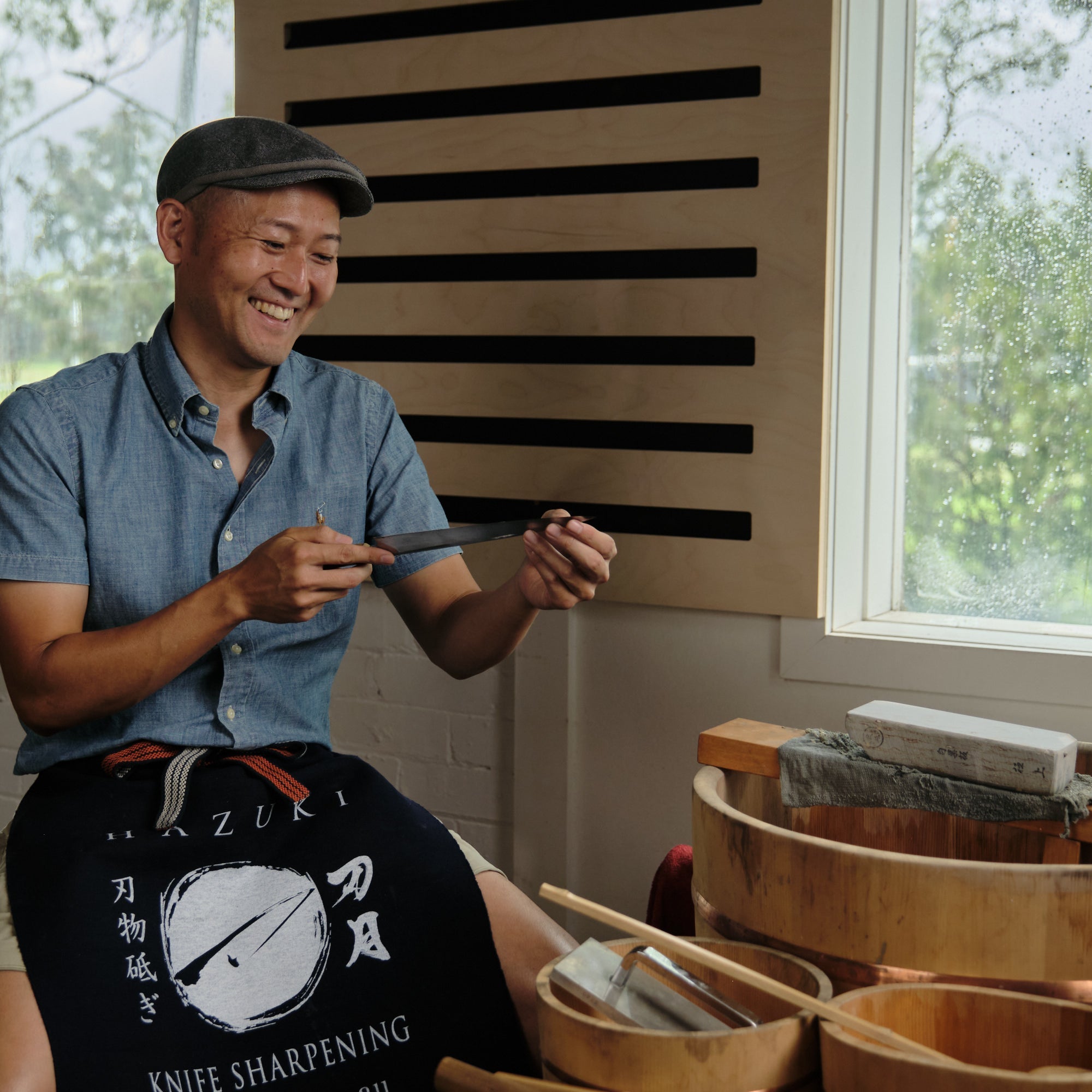
Meet the Specialist
About Nari Watabe
Nari is a former aerospace engineer and loves flying. He sees a commonness between knives and aerofoils and is fascinated by the mesmerising beauty of the science in blades.
He was a teenager when he first started sharpening after he saw his mother sharpening her kitchen knives as her routine. She showed him how she did it and it was not as easy as it looked. At the time it did not matter if he could not sharpen.
When he started living and cooking by himself, he felt it was necessary to be able to sharpen knives. He took lessons, watched videos, and read books, which all helped him to sharpen better but he still was not sure why his knives that were supposedly sharp did not cut some particular foods well. It was almost a mystery until he joined the Japan Houchou Togi Association where he learnt valuable knowledge. It was indeed a turning point in his sharpening journey and he realised that sharpening is actually a lot more to do with knowledge.
In the world of sharpening, there are many pitfalls and a lot of misleading information, so he feels it is his mission to use his expertise to help people who need to use sharp and functional knives and tools.

What is this timber tub?
What is たらい Tarai?
A tarai, たらい, a traditional Japanese tub made of timber, which the Japanese used it as a sink, trough, and bathtub for little kids. Depending on the size, shape, and purpose, the name changes. For example the small one next to the tarai is called おけ, Oke. The Japanese often used it as a bucket to contain water and pour it over them in the bathroom. The knife sharpener would also use a tarai and oke with their whetstones, and we decided to continue the tradition.
This round timber tub imparts a calm meditative sensation and resembles the full moon (a symbol of enlightenment in Zen Buddhism). Our name, Hazuki 刃月, is translated literally as Blade Moon. The inspiration for our name comes from our sharpening station.

